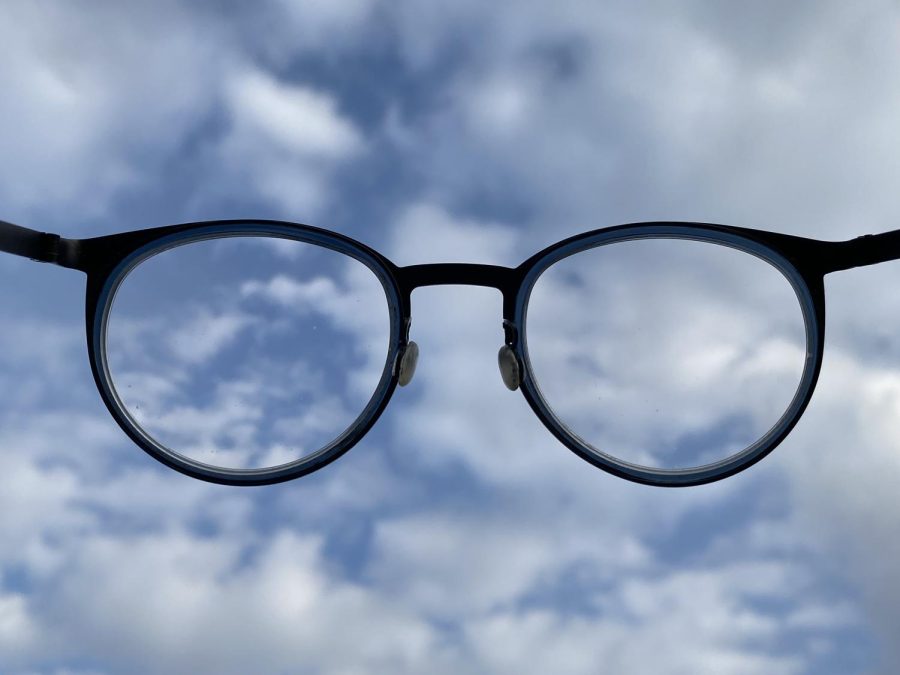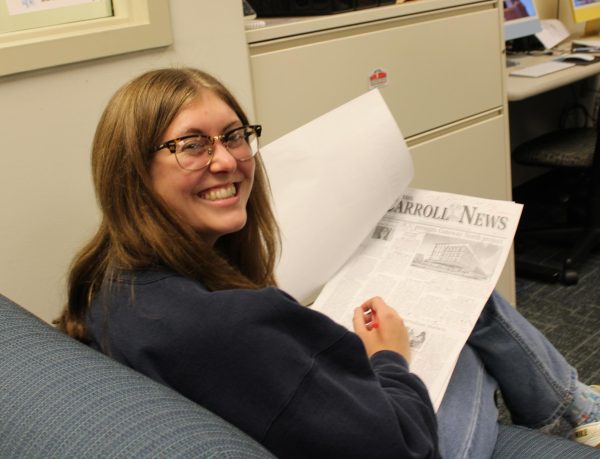Giba’s Claim: See the world bifocally
A bifocal view through Giba’s glasses.
F. Scott Fitzgerald, 60 years ago, claimed that “the test of a first-rate intelligence is the ability to hold two opposed ideas in the mind at the same time, and still retain the ability to function. One should, for example, be able to see that things are hopeless and yet be determined to make them otherwise.” Such a bifocalist perspective is a crucial skill to cultivate in our world, especially positions of leadership.
The bifocal mentality opts to see one issue from two different lenses, two different visions, recognizing separate truths in both of them. It is a sort of paradoxical, labyrinthian perspective to embrace, as holding the ideas together in opposition requires navigating the alleys of an issue to understand its roots and its logic. It is an acknowledgement of the grayness of the world, as there are certainly many truths, and there can be two valid truths on opposite sides for any issue.
I first came across the term while reading Barack Obama’s memoir “A Promised Land,” where he explained the skill he found most valuable during his presidency was holding the paradoxical view that an idea and its opposite could be true at the same time. A core part of his decision making process, Obama embraced the idea that one should know their opponents arguments better than their own. Looking at the current political landscape, it is difficult to imagine such a perspective being championed the same way as it was during his presidency.
The United States’ democracy has locked itself into an increasingly polarized society with each passing election year. A core lamentation that has contributed toward such a political sphere is lack of dialogue between conflicting perspectives, a lack of a bifocal approach to problem solving. I wager bifocalism is an idea that defines our democracy, and in its simplest sense, is the middle of the venn diagram for conversation between opposing ideologies. The bifocal approach can apply to anything, however, not just politics.
Christopher Nolan, the acclaimed film director, producer and screenwriter, found bifocalism an essential creative skill. In Tom Shone’s biography of Nolan, “The Nolan Variations,” Nolan explains the comparative dichotomy between the impression of a building or a space when one visits it as a child, held against a revisitation ten years later: “When you think about what your memories do, what your brain is doing, it’s holding two contradictory ideas in the same physical space, sort of in opposition, with no problem.” Nolan harbinges this distinction on instinct, the ephemeral take your mind has on your environment.
When I think of my perception of John Carroll’s campus in Fall 2018 versus that of Fall 2021, the identity of campus in these moments are simultaneously in my mind, uncontradictory of each other, showing shades to my understanding by demonstrating how time passes and things change. These memories are then multiple truths, times gone by as I remember. We can recognize different energies of places, and know the difference while being informed from our past truths. Ideas similarly undergo the same scrutinization of shifting and morphing over the years. We can use this breadth of multifacetation on any vignette to inform our perspective and bolster our efforts to recognize truth within opposition.
However, tied closely to bifocalism is the psychological phenomena of cognitive dissonance, a mental disorientation resulting from holding two conflicting ideas in opposition. Hence why this is a skill that requires practice, recursively seeing the bigger picture beyond our own tunnel vision, our pigeonholed perspective.
Such is one of the core issues of humanity, though: the inability to reconcile differences and find ideological compromise. Wars have raged over this fundamental ideological paradox: a joint search for truth, despite the subjectivity of truth bringing divided parties to separate absolutes. There are objective scientific and mathematical truths, but in terms of subjective truth, using bifocalism as a vehicle for empathy is a start to repairing not only our political sphere, but interrelations between our relationships with others near and far.
Consider this valid bifocal approach provided by Psychology Today: “I sincerely strive to learn and understand,” and “I realize that some things defy understanding and that I need to offer them up to mystery.” There is a level of participation bifocalism requires, that we offer up the concreteness of our ways in that we return to a wet cement that ceases to harden, driven by the spectrum of truth.
James Balwin, writing in “Notes of a Native Son” in 1955 captures the sentiment of bifocalism in his own way, illustrating a bifocal approach of acceptance in conjunction to fighting injustice : “to hold in the mind forever two ideas which seemed to be in opposition. The first…acceptance totally without rancor, of life as it is, and men as they are [;] . . . the second . . . that one must never, in one’s life, accept . . . injustices as commonplace but must fight them with all one’s strength.” We are called to recognize these separate truths of life, the paradoxical nature of our existence and our ideologies. Your truth is not mine, and mine is not yours, but we can certainly aim to understand each other’s.








